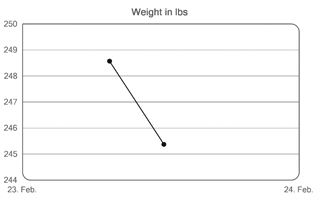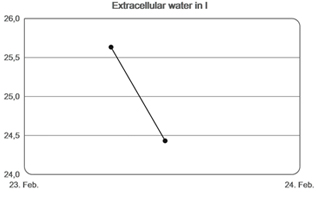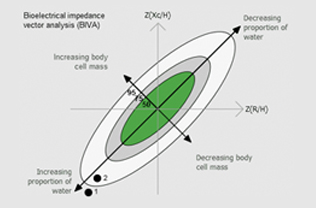Medical history/diagnosis
A 58 year-old man with chronic renal insufficiency has been on dialysis for four years. As part of the procedure, dry weight has to be determined regularly. Simple weighing allows to determine the removed water. The next objective would now be to address the issue of whether the dry weight can really be rated "dry". In order to be able to make a statement in this case, body composition needs to be determined with the aid of the seca mBCA.
Graphs of measuring results

Weight
The reduction in water due to dialysis can be determined in the weight graph.
- Before: 112.75 kg
- After: 111.30 kg

Extracellular water
The extracellular water results show the expected reduction.
- Before: 25.60 liters
- After: 24.40 liters

Bioelectrical impedance vector analysis (BIVA)
BIVA shows that dialysis is correctly set to suit the patient. The fact that the patient is in the normal range of the BIVA means that the water reduction/dry weight can be rated "dry".
Summary
The graph measurement for the patient shows that in addition to determining dry weight, it is also important to determine body composition. BIVA can be used to show that the dry weight measured cannot yet be considered dry, as the patient is still at the outside edge of the normal range of the BIVA chart.
seca mBCA measurement allows dry weight to be rated. In this case BIVA shows that dialysis is not yet set correctly, as the patient is at the outermost limit of the normal range.
